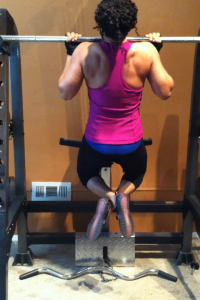 In our last post, we discussed the the necessity and benefits of working your back muscles regularly, learning to do pull-ups, and why I’m just so in loveee with them as both a trainER and trainEE.
In our last post, we discussed the the necessity and benefits of working your back muscles regularly, learning to do pull-ups, and why I’m just so in loveee with them as both a trainER and trainEE.
I hope I’ve convinced you to give this beloved exercise a shot. If nothing else for the confidence boost both inside (from knowing how dang strong you are!) and out (the upright “confident” posture courtesy of the lat muscles balancing out the over-worked anterior muscles). The super sexy back, and über cool points that it will get you with friends, family (especially the kids!) is just an awesome bonus. ;)
It doesn’t matter if you’ve never been able to do a pull-up in your life, it’s never too late to start training for it. I was the wimpy (and proud) girl in gym class that participated in ZERO fit tests for fear of looking silly to my classmates (mainly one particular, future-hubs-classmate, if we’re being honest). I didn’t learn to crank out pull-ups until well into my adult years.
Side note: because of my shame over my past pull-up transgressions, my homeschooled son has never been able to escape my militant pull-up training. At 17, he can “jump and give me 10” no matter how long it’s been since he last officially “worked out.” (Just challenged him, pop-quiz style, yesterday because it had been about a year…”sooo how many pull-ups do you think you can do now?” He proceeded to crank out 15 with ease before tossing the smart aleck teenage smirk my way…whatevs).
Try hanging from the pull-up bar.
Jump up on a pull-up bar, or pull a step or dumbbell up to the pull-up bar and instead of jumping up, use a stool to boost you closer to the bar and release your feet to a hanging position once your arms are securely gripped. See how this feels. If this isn’t horrible, proceed to the next tip. If you struggle with this task, see part one of this series, and work on exercises listed there, as well as the following for at least a month and then try bar hangs again:
*Work on your back strength. Use various back exercises such as lat pull-downs, single arm cable rows, one arm dumbbell rows, bent over rows, etc. to test your strength gains.
*Work on your grip/forearm strength. Do open finger dumbbell holds, farmer carries and plate pinches.
Remember that the strength rep range is about 5-6 reps or less. If your strength phase proves nonproductive (your numbers are stagnant for 2-4 weeks), move to an endurance phase and then try again after a few weeks.
Try (a variety of) assisted variations.
*Vertical pulls – hold on to any vertical surface (bar, pole, door frame, etc,) and pull your body “chest to bar.” This may seem like a basic move, but building the endurance here will benefit later. Often we skip the exercises that seem “too basic” only to discover that we don’t have the base muscle strength/endurance to advance in the real move.
*Jackknife pulls or inverted rows – hold your feet out straight in front of you and lie under a bar, or chair. Pull your chest toward the bar, practicing both an over AND underhand grip position. Bend your knees as needed if you need to further modify this move.
*Move on to partner assisted pull-ups, not on a machine, but with the aid of a workout partner. Have your workout partner support your legs (bend legs at the knees) and help push your body weight up. You essentially need to take the majority of the weight yourself, but your partner can assist as needed and to the appropriate degree.
*No partner? Try band-assisted pull-ups. There is another variation of assisted pull-ups you can try that can be done without a workout partner and not on an assisted pull-up machine. This other variation involves using a thick resistance band. Hook the band around the top of pull-up bar/handles and let it hang. Hook your hands on the bar and bend your legs behind you, resting your knees in the band loop. It’s kind of strange to do these at first, as you feel like you have to really balance yourself, but you will catch on shortly.
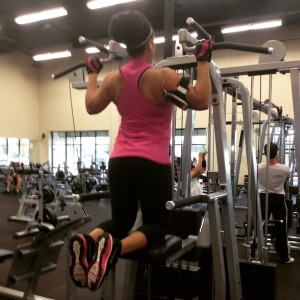
The assisted pull-up machine is a great tool if you don’t have a partner. Just remember that the goal with this machine is to go *down* in weight over time — rather than up, like most machines. Using less of the machine weight means that you are pulling more of your bodyweight. ;)
Other assisted variations:
Chair Assist
Machine assisted
Go negative.
When you can do assisted variations with ease, start incorporating negative pull-ups. Negative pull-ups will develop your lat strength like no-other. They will teach you how to pull with your back (not your arms), and allow you to pull more of your own body weight each time. You can do either straight sets of negatives-only (3-4 sets of 1-6 negative reps), or incorporate them with your assisted pull-ups. Simply do as many assisted pull-ups as you can, then bang out another 2-3 negative reps. Or go up assisted, and come down negative with full body weight.
Tying it all together: Pull-up Progression Schedule
If you’ve done all of the above, and allowed yourself to patiently progress through various stages, you should be ready to crank it! But if you’ve gone to attempt a pull-up again and still feel ill-prepared, try the following pull-up progression from one of my fave bodyweight exercise books: Convict Conditioning. It breaks down pretty much every bodyweight move and gives you awesome guidelines on how to progress from beginner modifications to the “elite” version of each (one arm push/pull-up, one-leg squat, etc).
Incorporate the following into your regular back workouts over the next few months. Start at the beginning of each “level” – once you work your way up to the “progression” amount, move to the starting amount of the next level. Do NOT rush through the progressions, but rather allow your body to acclimate to each level, so that you have the strength and endurance of the muscles needed to pull your entire body weight, with zero assistance: (see the playlist below for demo of each “level”)
Vertical Pulls: Start with 1 set of 10, work your way up to 3 sets of 40
Horizontal Pulls: (inverted rows): Start with 1 set of 10, work your way up to 3 sets of 30
Jacknife Pullup: Start with 1 set of 10, work your way up to 3 sets of 20
Half Pullups: Start with 1 set of 8, work your way up to 2 sets of 15
Full Pullups: Start with 1 set of 5, work your way up to 2 sets of 10
Regardless of which level you’re at in the process, continue to test and retest. Even if it seems like a shot in the dark, jump up ever-so-often, and give it a shot. Can’t do a full pull up? Can you bend your arms a bit more than last time? Eyeballs almost over the bar? Great! That’s progress. Keep executing your steps and retesting. Take every new milestone as a sign that you’re that much closer!
It should go without saying, but I figure I may as well address the elephant in the room. FOOD. If you’re still afraid of getting your grub on, don’t expect too much from your lifts. Gaining strength requires sufficient fuel, and you will often notice the difference in your level of beastiness based on your intake (amount AND type). I won’t go into much more detail, but just an FYI so you know where to look if you are doing “everything right” and still seem to be plateauing in your lifts — you simply may not be eating enough.
As with any progress, patience is key. Gaining strength and perfecting a new exercise, especially a difficult one, takes time. Focus on increasing your upper body strength and you will notice that other lifts will subsequently increase as well. As you become stronger in your journey towards perfecting a body weight pull-up, you’ll notice your lifts in general will take off in an upward trend. Before you know it, you’ll be showing up that guy that’s flailing around under the pull-up bar! And THAT moment…priceless. ;)
Now…you have a plan, go kill it!
~Kiki :)
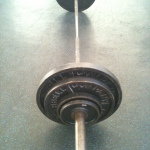
Should you just do cardio to lose weight? How heavy is heavy lifting? Do "strength" DVDs count? What if you don't want to lift? Sign up now for in-depth info on strength training and fat loss. You'll also receive special vids and free workout plans to help you get the most from your time in the gym.
No worries, we hate spam too!
Discover more from Eat More 2 Weigh Less
Subscribe to get the latest posts sent to your email.

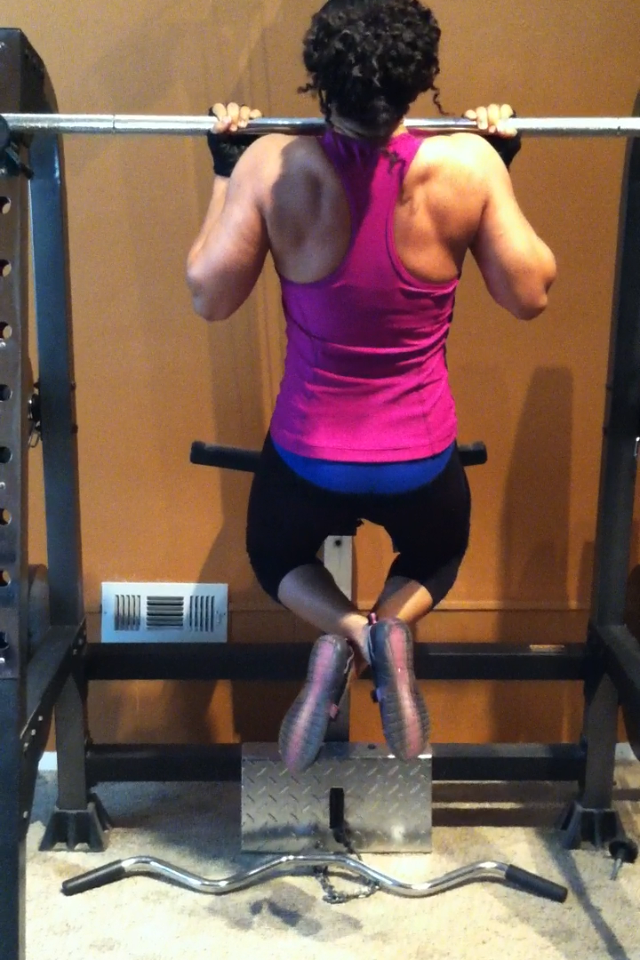
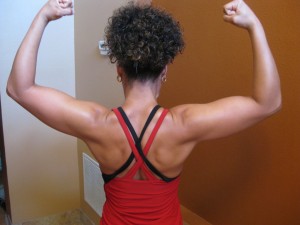
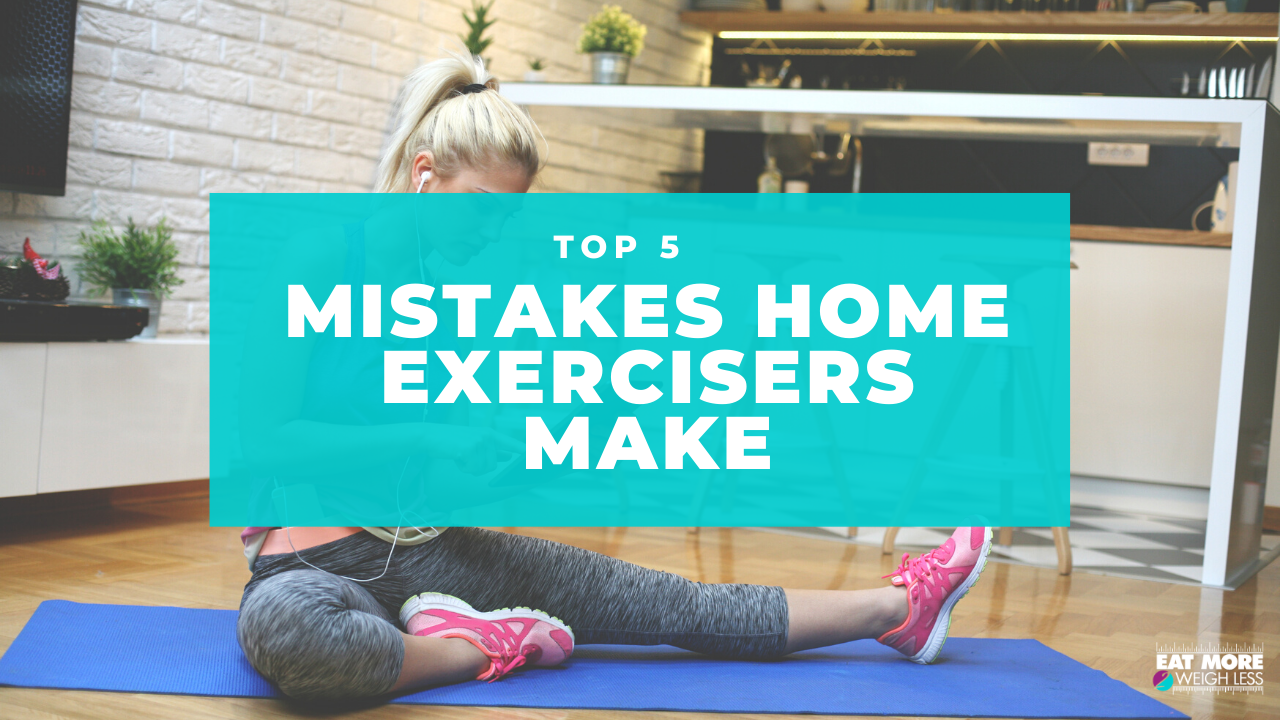
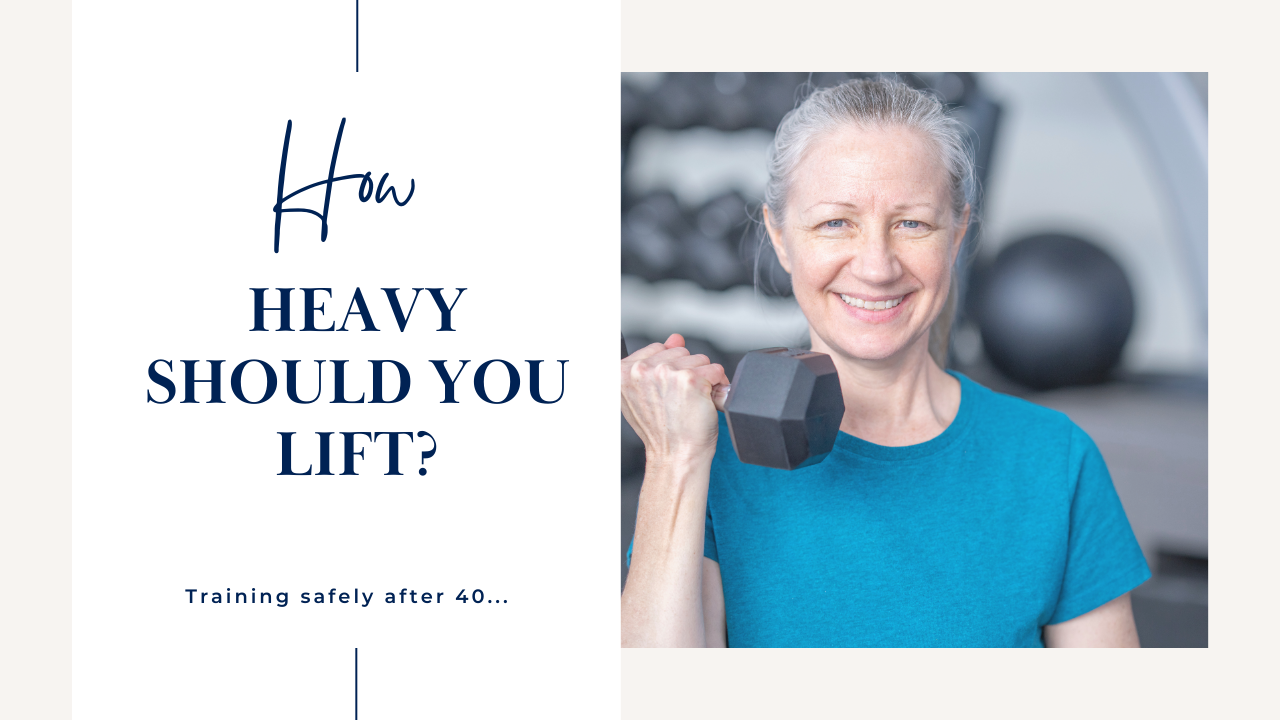
Recent Comments